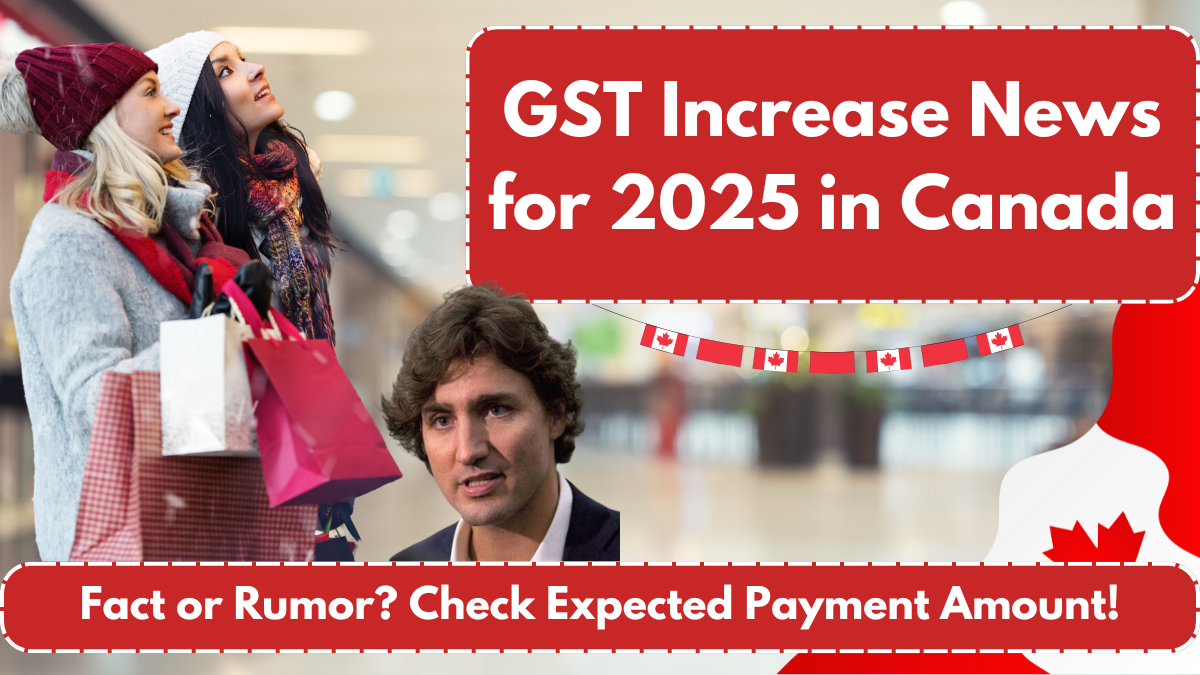The Goods and Services Tax (GST) is a federal tax levied at a rate of 5% on most goods and services sold in Canada. In some provinces, it is combined with the provincial sales tax (PST) to form the Harmonized Sales Tax (HST). Revenue generated from GST and HST contributes to public services such as healthcare, education, infrastructure, and other government programs, ensuring economic stability and national growth.

Historical Background of the GST
The GST was introduced in 1991, replacing the federal manufacturers’ sales tax. This shift was made to establish a fairer taxation system, ensuring that taxes were uniformly applied to goods and services rather than disproportionately impacting manufacturers. Over time, certain provinces have adopted the HST model, which combines both federal and provincial taxes to streamline collection and compliance.
No GST Rate Increase in 2025
Despite ongoing discussions and speculation, the Canadian government has confirmed that the GST rate will remain unchanged at 5% in 2025. This stability is beneficial for both consumers and businesses, allowing for better financial planning and preventing unexpected tax burdens.
GST/HST Credit Enhancements for 2025
While the GST rate remains constant, adjustments have been made to the GST/HST credit amounts to help offset the rising cost of living. These credits are tax-free quarterly payments intended to support lower and middle-income households by reducing the impact of GST/HST on their finances.
Updated Annual GST/HST Credit Amounts for July 2024 – June 2025
| Category | Maximum Annual Credit |
|---|---|
| Single Individual | $519 |
| Married/Common-Law Couple | $680 |
| Each Child Under 19 | $179 |
Note: These amounts may vary based on income and eligibility criteria.
Eligibility for the GST/HST Credit
To qualify for the GST/HST credit, individuals must meet the following requirements:
- Be a Canadian resident for tax purposes.
- Be at least 19 years old, have a spouse/common-law partner, or be a parent.
- File a 2023 tax return, even if they had no income.
The Canada Revenue Agency (CRA) calculates the credit based on adjusted family net income from the most recent tax return. This ensures that financial assistance is distributed equitably, with greater support for those who need it most.
How to Apply for the GST/HST Credit
No separate application is required for the GST/HST credit. The CRA automatically assesses eligibility when processing tax returns. The credit amount is included in the taxpayer’s Notice of Assessment, streamlining the process and ensuring easy access to the benefit.
GST/HST Credit Payment Schedule for 2025
Payments are made quarterly on the following dates:
- January 3, 2025
- April 4, 2025
- July 4, 2025
- October 3, 2025
Recipients can receive payments via direct deposit or cheque. Enrolling in direct deposit ensures faster and more secure transactions.
Monitoring Your GST/HST Credit
To track payments and check eligibility status, individuals can use the CRA’s My Account portal. This online tool provides access to payment history and personal tax information. It is also essential to keep personal details, such as marital status and banking information, updated to avoid payment delays.
Inflation’s Role in GST/HST Credit Adjustments
Inflation significantly impacts GST/HST credit adjustments. Rising costs of living necessitate periodic increases in credit amounts to maintain purchasing power for recipients.
Example Scenario: A single parent with two children receives:
- Base Credit: $519
- Child Amount: $179 per child x 2 = $358
- Total Annual Credit: $519 + $358 = $877
- Quarterly Payment: $219.25
This additional income helps cover essential expenses such as food, clothing, and utility bills.
Comparing Canada’s GST with Global VAT Systems
Canada’s 5% GST rate is among the lowest worldwide. Countries such as the UK and Australia impose Value-Added Tax (VAT) rates ranging from 10% to 20%. While higher rates generate more government revenue, they also increase consumer expenses. Canada’s lower GST rate balances affordability with economic sustainability.
Tips to Maximize Your GST/HST Credit Benefits
- File Taxes on Time – Ensure your 2023 tax return is submitted promptly to avoid payment delays.
- Verify Personal Information – Keep marital status, dependent details, and address up to date.
- Enroll in Direct Deposit – Faster and more secure payments are made directly to your bank account.
- Stay Informed – Regularly check for government updates on GST/HST credits and taxation changes.
- Plan Your Budget – Incorporate GST/HST credits into your financial planning for better expense management.
Frequently Asked Questions (FAQs)
1. Will the GST rate increase in 2025?
No, the GST rate will remain at 5% throughout 2025.
2. How do I check my GST/HST credit status?
You can monitor your credit status through the CRA’s My Account portal online.
3. Do I need to apply for the GST/HST credit separately?
No, eligibility is automatically assessed when you file your tax return.
4. When will I receive my GST/HST credit payments in 2025?
Payments will be issued on January 3, April 4, July 4, and October 3, 2025.
5. What should I do if my payment is delayed?
Check your CRA My Account for updates and ensure your personal details are correct. If issues persist, contact the CRA directly.
6. How is my GST/HST credit amount determined?
The CRA calculates your credit based on your adjusted family net income from your 2023 tax return.
7. Can I receive my payment by cheque instead of direct deposit?
Yes, if you have not enrolled in direct deposit, your payment will be sent via cheque.
Staying informed about GST/HST credits and taxation policies allows individuals to make better financial decisions. By understanding eligibility criteria, payment schedules, and inflation-related adjustments, Canadians can take full advantage of available tax benefits.
For More Information Click Here
Akesh is a furniture expert with years of experience in design and craftsmanship. Specializing in sustainable materials, he shares his expertise to help people create stylish and functional living spaces.
